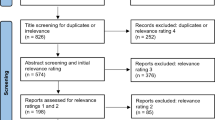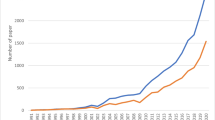Abstract
This paper investigates on the productivity effects of power outages on manufacturing small and medium enterprises (SMEs) in Senegal, using a panel data on manufacturing firms. Productivity is estimated using stochastic frontier models, and power outages measured by their frequency or their duration. We controlled for firms owning a generator, relevant covariates as data availability permits as well. The main results are drawn from random effects linear panel model. Nonetheless, the results remain consistent to the robustness checks using different models: a double-sided truncated data model and a generalized linear model, and different productivity measures, using data envelopment analysis. We find that power outages have negative significant effects on the productivity of SMEs in Senegal. Further, firms with a generator were successful in countering the adverse effect of power outages on productivity, this make the negative effect bore only by SMEs, which in some cases cannot afford to own a generator. As a matter of fact, the manufacturing sector lost up to around 15% of the actual productivity due to power outages in 2012, and small and median firms have lost, respectively, around 4.7 and 4.2%. Besides, another important finding is the significant positive effect of access to credit on productivity. At last, it is confirmed that productivity increases with firms’ size.

Source: By author, from World Bank data and the 2012 survey

Similar content being viewed by others
Notes
We acknowledge the financial support of TrustAfrica and Institute for Research Communication and Development in funding the survey of the power outages effect for firms in Senegal (2012).
In the literature very small enterprises, also referred to as micro firms, have been analyzed separately from small and medium enterprises. For recent references see Reinl and Kelliher (2014), Fajnzylber et al. (2011), Alves and de Medeiros (2015), Westhead et al. (2002), Baumann and Kritikos (2016) and Khan and Quaddus (2018).
Originally developed by Durbin (1954), extended further by Wu (1973) and Hausman (1978), and known as Durbin–Wu–Hausman tests (DWH tests), this procedure is about comparing consistent estimates to some more efficient ones. In the case in hand in this paper, if endogeneity is not an issue, the panel estimates are consistent, and are preferable to panel-IV estimates. We test the null hypothesis that the error terms are uncorrelated with all the regressors against the alternative that they are correlated with some of the regressors. The regression extended version of the test is used here (Davidson and MacKinnon 2003). We first run the suspected variable against all other covariates, and save the residuals; afterwards, we run the main equation with the saved residuals as an explanatory variable, alongside the other covariates. If the residuals come out significant, therefore, endogeneity is an issue; in the opposite case, the suspected variable is free of endogeneity.
References
Aigner, D., Lovell, C., & Schmidt, P. (1977). Formulation and estimation of stochastic Frontier production function models. Journal of Econometrics, 6(1), 21–37.
Alan, S., & Leth-Petersen, S. (2006). Tax incentives and household portfolios: A panel data analysis. Center for Applied Microeconometrics, University of Copenhagen, Working paper number 2006–2013.
Allcott, H., Collard-Wexler, A., & O’Connell, S. D. (2016). How do electricity shortages affect industry? Evidence from India. American Economic Review, 106(3), 587–624.
Alves, J. L. S., & de Medeiros, D. D. (2015). Eco-efficiency in micro-enterprises and small firms: A case study in the automotive services sector. Journal of Cleaner Production. https://doi.org/10.1016/j.jclepro.2015.07.063.
Andrews, M., Schank, T., & Simmons, R. (2005). Does work sharing Work? Some empirical evidence from the IAB-establishment panel. Scottish Journal of Political Economy, 52(2), 141–176.
Arnold, J. M., Mattoo, A., & Narciso, G. (2008). Services inputs and firms productivity in Sub-Saharan Africa: Evidence from firm-level data. Journal of African Economies, 17(4), 578–599.
Bah, E., & Fang, L. (2015). Impact of business environment on output and productivity in Africa. Journal of Development Economics, 114, 159–171.
Banker, R. D., & Natarajan, R. (2008). Evaluating contextual variables affecting productivity using data envelopment analysis. Operations Research, 56(1), 48–58.
Barro, R. J., & Sala-i-Martin, X. (1992). Convergence. Journal of Political Economy, 100(2), 223–251.
Bartelsman, E. J., Haltiwanger, J. C., & Scarpetta, S. (2009). Cross country differences in productivity: The role of allocation and selection. American Economic Review, 103(1), 305–334.
Bartelsman, E. J., Haskel, J., & Martin, R. (2008). Distance to which frontier? Evidence on productivity convergence from international firm-level data. CEPR discussion papers 7032, C.E.P.R. Discussion Papers.
Baum, C. F. (2008). Stata tip 63: Modeling proportions. The Stata Journal, 8(2), 299–303.
Baumann, J., & Kritikos, A. S. (2016). The link between R&D, innovation and productivity: Are microfirms different? Research Policy, 45, 1263–1274.
Bell, A., & Jones, K. (2014). Explaining fixed effects: Random effects modelling of time-series cross-sectional and panel data. Political Science Research and Methods, 3(1), 133–153. ISSN 2049-8470.
Charnes, A., Cooper, W., & Rhodes, E. (1978). Measuring the efficiency of decision-making units. European Journal of Operational Research, 2(6), 429–444.
Chaudhuri, K., Sasidharan, S. & Raj, R. S. N. (2018) Gender, small firm ownership and credit access: Some insights from India. Small Business Economics. https://doi.org/10.1007/s11187-018-0124-3.
Cissokho, L., & Seck, A. (2013). Electric power outages and the productivity of small and medium enterprises in Senegal. ICBE-RF research report N0. 77/13.
Coelli, T. J. (1996). A guide to DEAP version 2.1: A data envelopment analysis (computer) program. CEPA working paper 96/8, Department of Econometrics, University of New England, Armidale NSW Australia.
Commission de Régulation du Secteur de l’Electricité, Sénégal. (2007). Rapport Annuel.
Commission de Régulation du Secteur de l’Electricité, Sénégal. (2011). Note sur la révision intérimaire des conditions tarifaires de SENELEC. Période tarifaire 2011–2013.
Davidson, R., & MacKinnon, J. G. (2003). Econometric theory and methods. New York: Oxford University Press.
Delfanti, M., Fumagalli, E., Garrone, P., Grilli, L., & Schiavo, L. L. (2010). Toward voltage-quality regulation in Italy. IEEE Transactions on Power Delivery, 25, 1124.
Direction des PME. (2014). http://www.commerce.gouv.sn/article.php3?id_article=176.
Durbin, J. (1954). Errors in variables. Review of the International Statistical Institute, 22(1/3), 23–32. https://doi.org/10.2307/1401917.
Eiffert, E., Gelb, A., & Ramachandran, V. (2008). The cost of doing business in Africa: Evidence from enterprise survey data. World Development, 36(9), 1531–1546.
Fabozzi, F. J., Focardi, S. M., Rachev, T., & Arshanapalli, B. G. (2014). The basics of financial econometrics: Tools, concepts, and asset management applications. Hoboken: Wiley.
Fajnzylber, P., Maloney, W. F., & Montes-Rojas, G. V. (2011). Does formality improve micro-firm performance? Evidence from the Brazilian SIMPLES program. Journal of Development Economics, 94(2011), 262–276.
Fisher-Vanden, K., Mansur, E. T., & Wang, Q. J. (2015). Electricity shortage and firm productivity in China’s Industrial Firms. Journal of Development Economics, 114, 172–188.
Gifford, K., & Bernard, J. (2005). Influencing consumer purchase likelihood of organic food. International Journal of Consumer Studies, 30, 155–163.
Greene, W. (2005a). Reconsidering heterogeneity in panel data estimators of the stochastic frontier model. Journal of Econometrics, 126, 269–303.
Greene, W. (2005b). Fixed and random effects in stochastic frontier models. Journal of Productivity Analysis, 23, 7–32.
Greene, W. (2008). The measurement of efficiency, chap. The econometric approach to efficiency analysis. Oxford: Oxford University Press.
Grossman, G. M., & Helpman, E. (1991). Trade, knowledge spillovers and growth. European Economic Review, 35(2–3), 517–526.
Gӧkgür, N., & Jones, L. (2006). Privatization of electricity in Senegal. Boston Institute for Developing Economies: Lexington.
Hausman, J. A. (1978). Specification tests in econometrics. Econometrica, 46(6), 1251–1271.
Khan, E. A., & Quaddus, M. (2018). Dimensions of human capital and firm performance: Micro-firm context. IIMB Management Review, 9, 99. https://doi.org/10.1016/j.iimb.2018.05.004.
Kumbhakar, S. C., Lien, G., & Hardaker, J. B. (2012). Technical efficiency in competing panel data models: A study of Norwegian grain farming. Journal of Productivity Analysis. https://doi.org/10.1007/s11123-012-0303-1.
Kumbhakar, S., & Lovell, K. (2000). Stochastic frontier analysis. Cambridge: Cambridge University Press.
Levinsohn, J., & Petrin, A. (2003). Estimating production functions using inputs to control for unobservables. Review of Economic Studies, 70, 317–341.
Liedholm, C. (2002). Small firm dynamics: Evidence from Africa and Latin America. Small Business Economics, 18, 225–240.
Lucas, R. (2015). Human capital and economic growth. American Economic Review, 105(5), 85–88.
Meeusen, W., & van den Broeck, J. (1977). Effciency estimation from Cobb–Douglas production function with composed errors. International Economic Review, 18(2), 435–444.
Officer, M. (2004). Collars and renegotiation in mergers and acquisitions. Journal of Finance, 59(6), 2719–2743.
Olley, G. S., & Pakes, A. (1996). The dynamics of productivity in the telecommunications equipment industry. Econometrica, 64, 1263–1297.
Papke, L. E., & Wooldridge, J. M. (1996). Econometric methods for fractional response variables with an application to 401(K) plan participation rates. Journal of Applied Econometrics, 11, 619–632.
Reinikka, R., & Svensson, J. (2002). Coping with poor public capital. Journal of Development Economics, 69, 51–69.
Reinl, L., & Kelliher, F. (2014). The social dynamics of micro-firm learning in an evolving learning community. Tourism Management, 40(2014), 117–125.
Romer, P. M. (1990). Human capital and growth: Theory and evidence. Carnegie-Rochester Conference Series on Public Policy, 32(1), 251–286.
Solow, R. M. (1956). A contribution to the theory of economic growth. The Quarterly Journal of Economics, 70(1), 65–94.
Stevenson, R. F. (1980). Likelihood functions for generalized stochastic frontier estimation. Journal of Econometrics, 13, 57–66.
Syverson, C. (2011). What determines productivity? Journal of Economic Literature, 49(2), 326–365.
Villalón, L. A. (2011). Senegal: Assessing risk to stability. Washington, D.C.: Center for Strategic and International Studies.
Westhead, P., Wright, M., & Ucbasaran, D. (2002). International market selection strategies selected by ‘micro’ and ‘small’ firms. Omega, 30, 51–68.
Wilson, P. W. (2008). FEAR: A software package for frontier efficiency analysis with R. Socio-Economic Planning Sciences, 42, 247–254.
World Bank. (2007). The Senegal 2007 enterprise survey data set. World Bank Group.
World Bank. (2014). The Senegal 2014 enterprise survey data set. World Bank Group.
World Bank. (2017). Senegal at-a-glance. https://www.worldbank.org/en/country/senegal/overview.
World Bank. (2019). Doing business 2019. Training for reform. World Bank Group.
Wu, D.-M. (1973). Alternative tests of independence between stochastic regressors and disturbances. Econometrica, 41(4), 733–750.
Acknowledgements
I wish to express my deep appreciation to African Economic Research Consortium (AERC) for the financial support to carry out this research. I am also grateful to the resource persons and members of AERC’s thematic group D for various comments and suggestions that helped the evolution of this study from its inception to completion. Thanks are due to TrustAfrica and Institute for Research Communication and Development in funding the survey of the power outages effect for firms in Senegal (2012). I am indebted to the anonymous referees who reviewed the paper and provided comments and suggestions that helped in shaping and improving the overall quality of the paper. Many thanks to Jonathan Haughton and Darlene Chisholm at Suffolk University, and Babacar Séne at Université Cheikh Anta Diop for commenting early draft of this article.
Funding
This research was funded by the African Economic Research Consortium (AERC) (Grant No. RT15508) in Nairobi (Kenya).
Author information
Authors and Affiliations
Corresponding author
Ethics declarations
Conflict of interest
The author declares that he has no conflict of interest.
Additional information
Publisher's Note
Springer Nature remains neutral with regard to jurisdictional claims in published maps and institutional affiliations.
Electronic supplementary material
Below is the link to the electronic supplementary material.
Appendix
Appendix
See Tables 9, 10, 11, 12, 13 and 14.
Rights and permissions
About this article
Cite this article
Cissokho, L. The productivity cost of power outages for manufacturing small and medium enterprises in Senegal. J. Ind. Bus. Econ. 46, 499–521 (2019). https://doi.org/10.1007/s40812-019-00128-8
Received:
Revised:
Accepted:
Published:
Issue Date:
DOI: https://doi.org/10.1007/s40812-019-00128-8




